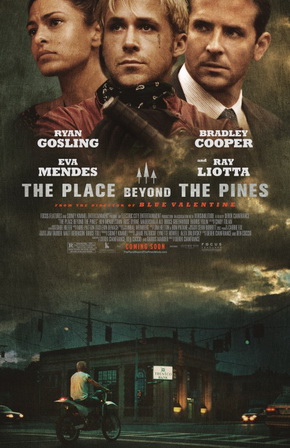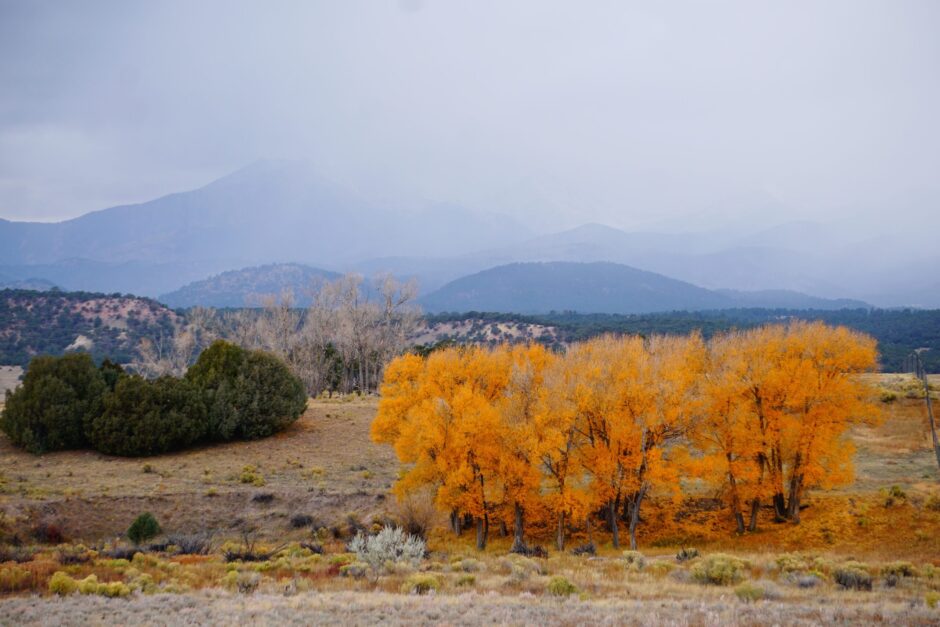So last night I caught the new Derek Cianfrance film The Place Beyond the Pines in St. Louis, once-great Gateway to the West, though the film should more fittingly be seen at a small cinema in New Paltz, New York, or some such Back East (or Hudson River Valley) locale with lush forests and rundown towns. I’ll refrain from any plot spoilers in what I say here, in part because it’s a knockout. I was impressed. And I’m a hard person to please, have seen dozens of films in the last few months and judged most of them as not worth the time to write a word about. Not this one. This was like a bracing splash of cold water on a face wearied by too many sloppy scenes of bad dialogue and nonsensical or hackneyed plots.
So instead of summing up the film and giving away all the (weird) viewing fun, I’ll offer this: Years ago I had the great fortune to take a graduate course with none other than the luminary playwright Edward Albee. Looking back, it was one of my favorite college courses. Albee told colorful anecdotes, brought in actors to stage scenes for us, and drilled into our young minds the idea that a play (or film, for that matter) should frequently try to surprise the audience, but that the surprise should be earned, should make sense. His quote for that was, “It must be inevitable.” The “it” of that quote is the surprise plot twist, the revelation of the character’s past, the unforeseen event that suddenly changes everything. He does this often in his own plays, and that semester directed a terrific cast in a performance of Who’s Afraid of Virginia Woolf? For those who know the play, one example of the surprise that must be “inevitable” concerns the story of George and Martha’s fictional son. When the secret is revealed, it upends some of the story that has unfolded to that moment, but makes perfect sense.
So too do several surprises in The Place Beyond the Pines. Ryan Gosling is like a young Marlon Brando in the early motorcycle scenes, but he’s just the early foundation of the film. The opening scene shows one of the those motorcycle stunts in which three different dirt bikes ride at top speed in a spherical steel cage. It’s a mesmerizing scene, and a metaphor for the complexity that follows. Then things shift. You come to think Bradley Cooper is the star of the film, until the story shifts again.
Only once was I able to guess or foresee a surprise plot twist before it occurred, and that particular event was perhaps the biggest reach of the plot (a union of two sons), but can also be defended as fulfilling the film maker’s vision of Fate. The cinematography tends toward the truly gritty, showing most of the actors with “warts and all”—lingering close-ups of their spotty faces (especially the older male actors playing cops or judges, like Ray Liotta), resisting the too-common trait in Hollywood films of making everyone look pretty, and thereby unconvincing. The tangled forests of New York State (which looks just like my sometimes-home-state of Pennsylvania) offer a lush backdrop to the somewhat decrepit feel of the small towns. In a nutshell, I say, Watch it.

- October 2023
- September 2023
- September 2021
- April 2020
- September 2019
- May 2019
- August 2018
- February 2018
- January 2018
- October 2017
- August 2017
- June 2017
- May 2017
- March 2017
- February 2017
- November 2016
- October 2016
- May 2016
- April 2016
- March 2016
- February 2016
- January 2016
- November 2015
- October 2015
- September 2015
- June 2015
- May 2015
- April 2015
- March 2015
- December 2014
- September 2014
- August 2014
- May 2014
- March 2014
- February 2014
- January 2014
- December 2013
- November 2013
- October 2013
- September 2013
- August 2013
- July 2013
- June 2013
- May 2013
- April 2013
- March 2013
- February 2013
- January 2013
- December 2012
- November 2012
- October 2012
- September 2012
- August 2012
- July 2012
- June 2012
- May 2012
- April 2012
- March 2012
- February 2012
- January 2012
- December 2011
- November 2011
- October 2011
- September 2011
- August 2011
- July 2011
- June 2011
- May 2011
- April 2011
- March 2011
- February 2011
- January 2011
- December 2010
- November 2010
- October 2010
- September 2010
- August 2010
- July 2010
- June 2010
- May 2010
- April 2010
- March 2010
- February 2010
- January 2010
- December 2009
- November 2009
- October 2009
- September 2009
- August 2009
- July 2009
- June 2009
- May 2009
- April 2009
- March 2009
Recent Posts
- Aliens Among Us: Probing Hillbillies and Freaking Shut-ins, How Netflix’s “Encounters” and Hulu’s “No One Will Save You” Prep Us for the Coming Alien Apocalypse, Kind of
- My Life as a Bob Odenkirk Character: On How Watching Netflix’s Black Mirror episode “Joan Is Awful” Mimicked My Experience of Watching the AMC series Lucky Hank
- “Bobcats, Bobcats, Bobcats”: Animal Life and a Tribute to “Modern Family”
- “The North Water”: This Ain’t Your Daddy’s Moby Dick
- Day 25: On David Quammen's "Spillover": Terrific Book That Foretold Our Pandemic, Kind of
Recent Comments
No comments to show.
